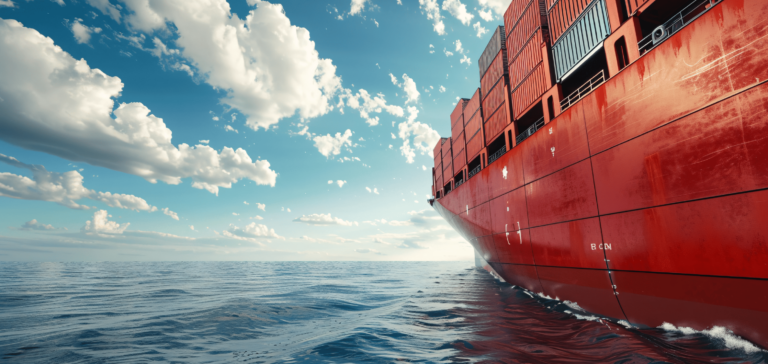The ongoing crisis in the Red Sea, marked by Houthi attacks on commercial vessels, continues to disrupt a key artery of global trade. Originating from Yemen, these targeted assaults near the Bab al-Mandab Strait underscore the region’s critical importance in maritime commerce. The ramifications of these incidents are profound, affecting not just the immediate area but echoing throughout the global supply chain.
On this blog, Forto experts will share regular updates and expert advice.
The current situation: January 8th
The situation in the Red Sea, as of the latest updates, remains tense and recent developments have seen a marked escalation in the conflict. The US military has engaged directly with Houthi forces, sinking three of their vessels and killing 10 fighters after a clash in the Red Sea. The United Kingdom, Australia, Canada, Germany, Japan, and Bahrain are among the nations supporting the US stance.
Shipping lines continue to make decisions on a vessel-by-vessel level. While the majority of vessels are now making the route around the Cape of Good Hope, selected and smaller vessels continue to brave the Bab al-Mandeb strait. Some of the vessels in the area have their AIS transmitters off for safety reasons.
Routing decisions will not only impact transit times and risk assessments for shippers; as of January 1st there is also the new EU ETS Charges to consider. Extended routes around Africa could increase the carbon emissions of shipments and the financial burden on cargo owners.
Capacity and equipment issues loom on the horizon, with significant constraints predicted for as early as weeks 3 and 4.
The SCFI (Shanghai Containerized Freight Index) trends indicated a gradual increase in rates. The latest reading of the North Europe index brings the rate to 2871 USD/TEU. It’s important to contextualize this with past trends. During the peak of the pandemic disruptions, rates to North Europe skyrocketed to 7800 USD/TEU. Comparatively, the current rates, though higher than those seen in late 2023, are still below these historical peaks.
Recommendations for Shippers:
The situation in the Red Sea remains dynamic and complex. Shippers must remain vigilant and informed, adapting their strategies to navigate these uncertain waters.
- Monitor Individual Vessel Movements: Given the discrepancy between carriers’ stated policies and actual vessel movements, shippers should closely track their cargo at the individual vessel level.
- Plan for Extended Delays: Anticipate and plan for extended delays due to rerouting. Adjust your logistics strategies to account for the longer transit times.
- Explore Alternative Modes: Investigate alternative transport modes, including multimodal options like sea/air, to circumvent disrupted routes.
- Prioritize your shipments: Identify which containers are most crucial to operations and end-customers and communicate that priority to our logistics partners.
Previous updates
January 2nd
In response to the recent attacks, including the targeting of the Maersk Hangzhou, Maersk has suspended all transits through the Red Sea and Gulf of Aden indefinitely, following an initial 48-hour pause. Different shipping companies have varied their responses to the crisis; while CMA CGM plans to gradually increase Suez Canal transits, others like Hapag-Lloyd continue to reroute around the canal for safety reasons, and companies such as EURONAV, EVERGREEN, and FRONTLINE are avoiding the Red Sea area entirely. The security situation has escalated with Iran deploying the frigate Alborz, and an increased presence of military vessels from the US and Britain heightens the risk of broader conflict. This situation is leading to expectations of ongoing blank sailings and rate hikes, affecting the cost and efficiency of shipping operations well into the first quarter of 2024.
December 31st
A second attack by Houthi Rebels to the Maersk Hangzhou reported. Following the 2 attacks on Maersk Hangzhou, Maersk announced they would stop transit for the next 48 hours to assess the situation.
December 30th
The Maersk Hangzhou was hit by a missile near the Gulf of Aden. The vessel was reported as seaworthy and there was no injury to crew.
December 28th
Several carriers are cautiously choosing to reroute certain vessels through the Red Sea passage, even though there are no official advisories regarding this change. Among the major global container carriers, Maersk stands out as fully committed to resuming Suez routing, while CMA CGM appears less decisive.
December 27th
On December 24th, Maersk announced plans to resume shipping operations in the Red Sea, influenced by the U.S.-led Operation Prosperity Guardian (OPG), a multinational effort to protect commercial traffic from threats like the Houthi forces in Yemen. This decision follows Maersk’s earlier rerouting of vessels due to attacks, impacting Suez Canal transit. Additionally, an incident involving the MSC United VIII highlighted the ongoing risks in the region, although all crew members were reported to be safe. This move by Maersk, amid the OPG’s deployment, signals a cautious approach to navigating the volatile maritime environment of the Red Sea.
December 22nd
In response to the ongoing Red Sea crisis, Maersk Line announced the rerouting of all its Asia-Europe and Middle East-Europe sailings via the Cape of Good Hope until mid-February 2024, extending transit times by 10-14 days. This proactive measure by Maersk reflected an anticipation of prolonged disruptions in the region.
Concurrently, ocean carriers, including French carrier CMA CGM, are implementing emergency peak season surcharges and invoking force majeure clauses due to the extended routes. The crisis is accentuating concerns around equipment and capacity, reminiscent of challenges seen during the Suez Canal crisis and the COVID-19 pandemic. As major companies like BP and Frontline halt or avoid Red Sea transits, many anticipate the crisis extending beyond general cargo to the energy sector.
December 21st
Since December 20th, carriers have consistently responded to the Red Sea crisis with selective rerouting and delays for safer passage through the Red Sea and Suez Canal. In reaction, ocean carriers have implemented emergency peak season surcharges (PSSs) due to rerouting, with French carrier CMA CGM invoking force majeure to manage cargo transit flexibly. Carrier data, offering insights into rerouting and revised ETAs, is becoming more available, though with varying quality. The crisis highlights equipment and capacity issues, reminiscent of the Suez Canal blockage and the COVID-19 pandemic, affecting shipping efficiency.
December 20th
Major shipping lines are adapting to the Red Sea situation with varied approaches. Maersk, MSC, and CMA CGM are selectively rerouting ships, while Hapag, YML, HMM, and ONE are routing all vessels via the Cape of Good Hope. OOCL, COSCO, and EVERGREEN await a safe passage through the Red Sea and Suez Canal. Other carriers continue using the Suez Canal or are awaiting further developments. Despite a US-led naval task force’s presence, the Suez Canal remains largely avoided by carriers. In response to these changes, impacting both westbound and eastbound routes, carriers like ONE have introduced emergency peak season surcharges, including a $500 per TEU surcharge on the Asia-Europe westbound trade starting January 1st.
December 19th
Major shipping lines are taking preventive action. Maersk, MSC, and CMA are adjusting operations on a vessel-by-vessel level with only selective rerouting. Hapag, YML, HMM, and ONE have decided to route all their vessels via the Cape of Good Hope. OOCL, COSCO, and EVERGREEN are waiting for a safe convoy through the Red Sea and Suez Channel. Other lines are still navigating the Suez Canal or awaiting clarity. These changes impact both westbound and eastbound routes, causing disruptions to shipping schedules. Rerouting is expected to delay shipments and potentially increase freight prices.
December 18th
Four of the world’s largest shipping companies, including MSC, CMA CGM, Maersk, and Hapag-Lloyd, have halted Red Sea transits due to missile attacks by Yemeni Houthi rebels. Concurrently, all HMM vessels bound for the Suez Canal are rerouted to the Cape of Good Hope. These actions will significantly disrupt vessel routes, leading to increased transit times and fuel costs and heightening the risk of delays. This situation has also caused a surge in insurance costs and will likely result in elevated shipping rates in the short to medium term.
December 16th
Recent events in the Red Sea, including targeted vessel attacks, have prompted a cautious response from shipping companies. Major carriers, including Maersk, MSC, and Hapag-Lloyd, are altering routes to prioritize crew safety, with significant implications for the global supply chain.
Understanding the Bigger Picture:
The Red Sea is crucial for Asia-Europe trade and the current developments pose numerous logistical challenges.
The Red Sea shipping crisis continues to evolve, with carriers adapting their strategies in response to the ongoing conflict. As the situation develops, the ripple effects on global supply chains, consumer prices, and the energy market are becoming more evident. Forto is continuously monitoring the situation in close contact with our partners and working to minimise the impact of disruptions for our customers.




